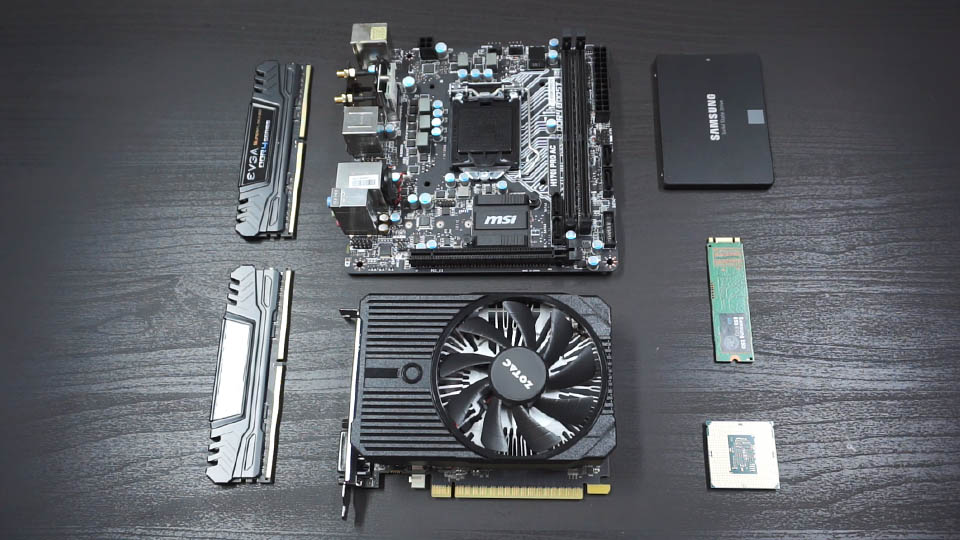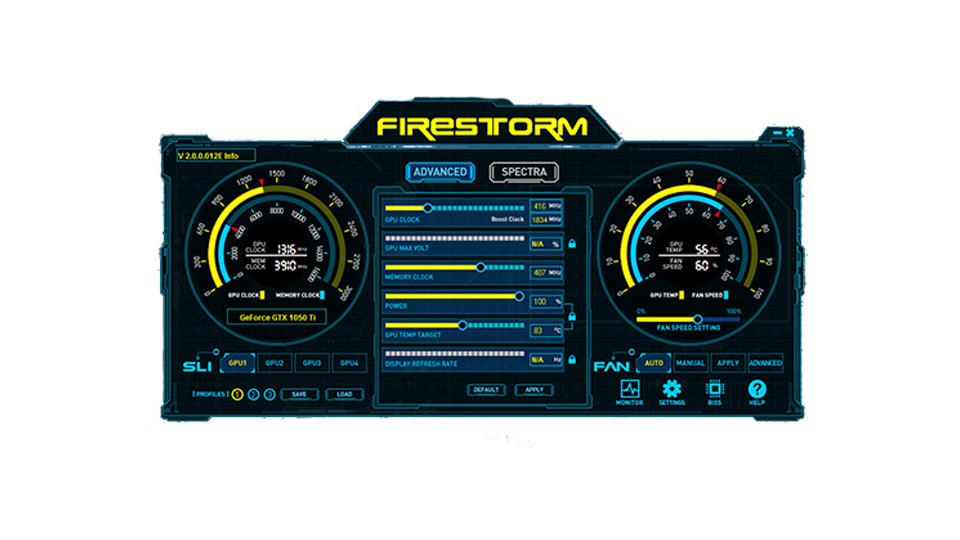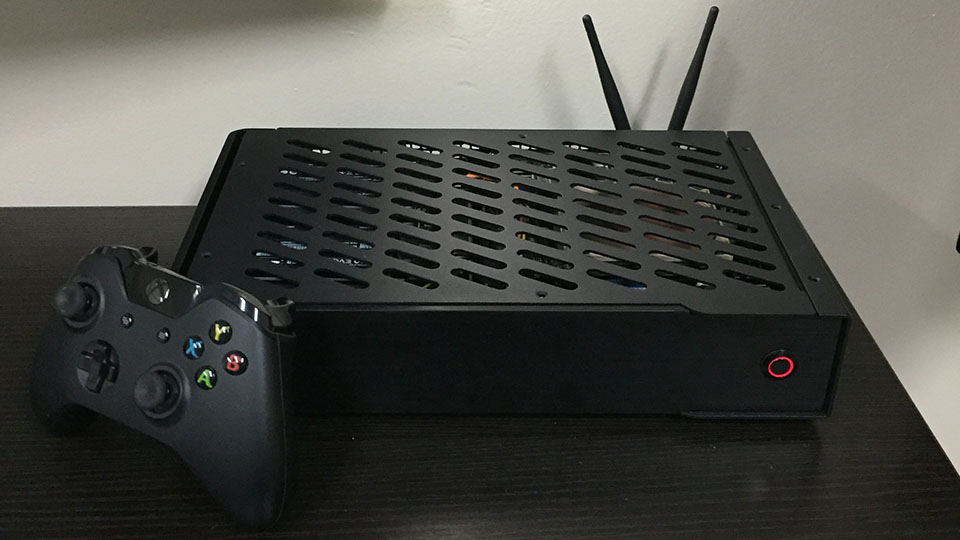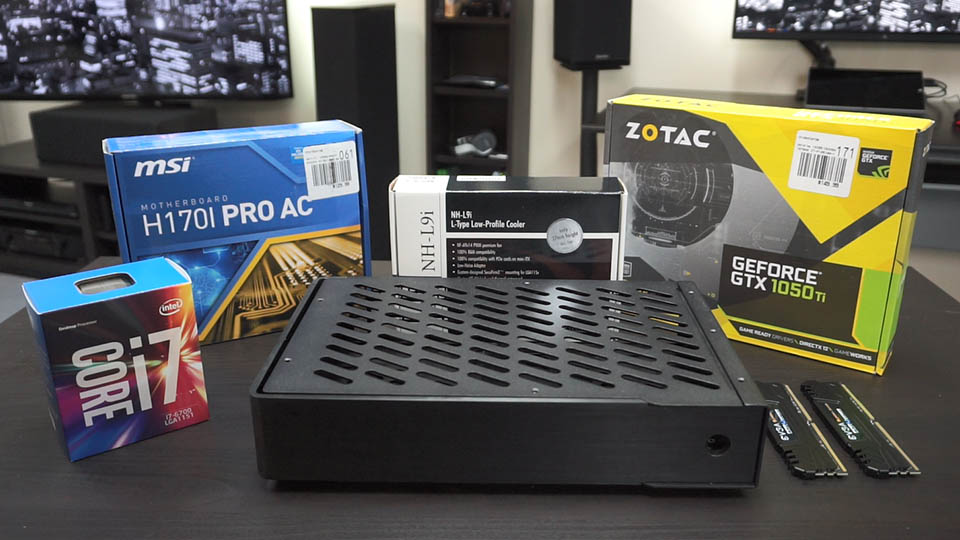Deciding to build a computer is a personal choice. You could just buy a pre-built unit after all. So I am of the mindset that when building a PC you should try and customize your build to your own personal needs. I have always loved small but powerful machines. You can check out my two older builds if you want to see what I mean.
Note: I updated this mini-itx build. Follow the link to learn more.
Portable PC Build With Few Compromises
I will be using this latest build as my daily do everything PC. This will include Video Editing (Adobe Suite), productivity, web development, and light gaming (MOBA’s and E-Sports titles).
If you are looking for an 8-Core, dual GTX 1080 system this isn’t it. There isn’t anything wrong with that type of build, but this system is designed to offer outstanding performance in a super compact package.
Component Selection

When building a portable PC like this, component selection is extremely important. You have to take note of things like cooling, and TDP in ways that you wouldn’t with a full sized system.
Like I stated in my previous build log you need to calculate your system power draw before you begin building a small form factor pc like this one.
I was able to keep my total peak draw under 200W due in large part to the power sipping GTX 1050 Ti and Intel Core i7-6700. Keeping the system draw under 200W was important because I wanted to use a Pico 160xt to power this system. As you will see in the video, Pico PSU’s eliminate unnecessary wires, and essentially take up no space.
| COMPONENT | PART NAME | |
| CPU | Intel Core i7-6700 | |
| GPU | Zotac GTX 1050 Ti Mini | |
| Motherboard | MSI H170I Motherboard | |
| RAM | EVGA 16GB DDR4 2400MHz | |
| HDD | Intel 600P 256GB NVMe m.2 SSD Samsung 850 EVO 500GB SATA SSD Samsung 840 EVO 120GB SATA SSD | |
| PSU | Pico 160xt w/ 192W Power Brick | |
| OS | Windows 10 64-bit | |
| Case | NFC Systems S4 Mini |
Case Selection

When I started planning a new build, I had to figure out exactly how small of a case I wanted to use. In my prior builds I used the Wesena ITX-5B, which only supported single slot/low profile GPU’s. I wanted to be able to use larger, and more powerful graphics cards.
This lead me to the NFC Systems S4 Mini. This is currently my favorite case for a variety of reasons. Many of which I covered in the review. The S4 Mini provides the perfect balance between size and performance for a build like this
Full System Build
Check out the video below to see the full system build and learn more. If you have any questions feel free to leave a comment here, or on YouTube.
Overclocking
Using the Zotac Firestorm utility I was able to overclock the Zotac 1050 Ti Mini in this system to 1838MHz, and add 405MHz to the memory clock.

This gave a nice bump in performance which resulted in a graphical improvement of about 7%-10%. I ran a bevy of performance tests and listed the results in the chart below.
I know most people use Afterburner, and you could achieve the same overclocking results with that program as well.
Benchmarks
So I know what you are thinking. It’s great having a tiny PC and all, but does this thing actually perform? Great question. Lets take a look at the benchmarks.
CPU Performance Benchmarks
| CPU TEST | STOCK | OVERCLOCKED |
| Geekbench CPU | 1437 | |
| Cinebench CPU | 810 | |
| 3D MARK CPU | 4647 |
GPU Performance Benchmarks
| GPU TEST | STOCK | OVERCLOCKED |
| Cinebench GPU | 127.14 | 131.47 |
| Cinebench GPU | 127.14 | 131.47 |
| Passmark | 5491.9 | 5581.1 |
| 3D Mark Timespy | 2462 | 2644 |
| 3D Mark Firestrike | 6653 | 7085 |
| Heaven 4.0 | 1762 – 70fps | 1880 – 74.6fps |
| Steam VR Test | 3.2 – Medium | 3.4 – Medium |
GPU and CPU Temperatures
Temperatures are very important to the long term stability of your system. Small form factor cases can often struggle to keep their components cool. To test this configuration in the S4 Mini I ran Furmark and Prime 95 to torture the GPU and CPU at the same time. While you would never encounter a load like this in the real world, the fact that there was no throttling is fantastic.
| STATE | CPU | GPU |
| IDLE | 34C | 30C |
| GAMING | 47C | 55C |
| STRESS | 84C | 62C |
Final Thoughts

I set out to build a no compromise PC that could handle my daily workload without a hitch, but was also extremely small. The build came out even better than I expected. The flexibility of this system will allow me to take my main system pretty much anywhere without any hassle.
The most surprising part of this build was the GPU. I did not expect to get this type of performance from a bus powered 1050 Ti. The ability to overclock the card with little effort is just icing on the cake.
This process has me really exciting for the future of small form factor computing.
Part List
Intel Core i7-6700From $304.99
MSI H170I MotherboardFrom $132.10
Zotac GTX 1050 TiFrom $139.99
EVGA 16GB DDR4 RAMFrom $89.99
Intel 600p NVMe M.2 SSDFrom $84.00
Samsung 850 EVO M.2 SSDFrom $117.00
Samsung 850 EVO SATA SSDFrom $169.00
Pico 160-XT PSUFrom $44.50
192W Power BrickFrom $49.95
NFC S4 Mini CaseFrom $150.00



Hi Jay,
I’m planing to build the same SFF system, I already have the Zotac 1050Ti mini,
but I doubt about the quality of the Pico psu, is it safe to use it for long term?
SFX psu still too big for system above, any advice for the best brand of pico psu? since i dont know what is the best brand for pico psu, thank you
Hi Suryo,
What concerns you about the quality of the PicoPSU? PicoPSU has been around for quite a while and has been used successfully in many of Josh/NFC’s custom systems — the one that most people use comes from mini-box, 160XT + 192W adapter is your best bet.
Cheers.
Pico PSU’s are rock solid. I have been using them for about 2 years now and have yet to have an issue. You may also be interested in HDPlex products. The HDPlex 300 and HDPlex 160 both off similar functionality.
https://tekeverything.com/hdplex-300-explained/
Hi ,
Can we explain how you managed to add 2 M.2 SSD ? ( in parts list )
This Motherboard has only one M.2 slot. Unless you added an adapter in the PCI express.
There is only one M.2 drive in this system.
Can you connect an external HDD for more storage?
Of course. It is a standard computer, just smaller.
Hey Jay, what’s the make and model of the Right-angle PCIe riser card that you used for the small form-factor that you setup in this video?
https://www.youtube.com/watch?v=fbkif6i2zTQ
Were u born in africa ?
what does that have to do with anything you read or saw here?